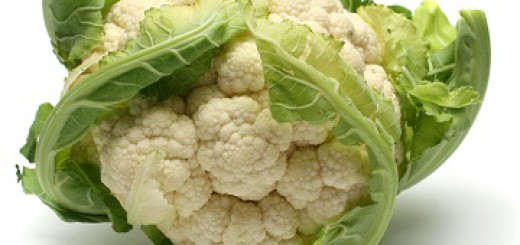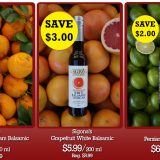Tips for Healthy Living: Bartlett Beauties
By Geri Wohl, CNC

Geri Wohl, Certified Nutrition Consultant Better Eating Coach
The leaves are beginning to change colors, the evening air has a bit of chill, the days are getting shorter and the fall fruit is now being picked. Lots of varieties of apples and pears abound. One of the earliest pears to market as it is more sensitive to the colder temperatures is the Bartlett. Get your napkin out as Bartletts are also known for being quite sweet and juicy.
Bartlett pears are the most popular pear variety in the US, making up about 50% of pears consumed. You may also see them labeled as a Williams or Williams’ Bon Chretien Pears. They are part of the Pyrus Communis species and in the same rose family as apples, apricots, cherries, peaches and strawberries. Bartlett pears are believed to date back to the mid-1700s when they were grown by an English schoolteacher. Washington State grows about half the US pear crop, followed by Oregon and California.
Bartlett pears have a rounded bottom that tapers to a smaller neck and stem. The unripe skin is green eventually turning to yellow as it ripens. Unlike apples, pears need to be picked before they ripen. If the pears are left on the tree to ripen, they will become mealy instead of developing the wonderful, juicy-sweetness for which they are known. It is best for Bartletts to be picked while still green and cooled for 1-2 days to activate the ripening process. If they are not allowed to chill, the fruit will never succeed in ripening. As they ripen, they produce ethylene gas that facilitates further ripening. Once ripe, pears should be stored in the refrigerator to stop the ripening process. Try to consume them within 3-5 days for best flavor.
While pears can be a bit more challenging to judge ripeness, they are well worth the effort. Pears are high in dietary fiber. In fact, they actually have more dietary fiber than apples. A medium-size pear contains about 22% of one’s daily value (DV) of dietary fiber. This fiber helps reduce LDL cholesterol levels associated with coronary disease. At least half of the fiber in pears is found in the skin, so don’t peel the fruit or you’ll be missing out.
Dietary fiber comes in two forms, indigestible and soluble. Both are plant compounds that aid in supporting our overall health. Insoluble fiber supports our digestive tract by facilitating the movement of foods through the intestinal tract and by adding bulk to the stool. Insoluble fiber binds to toxins and harmful chemicals in the colon, escorting them out of the body, thereby protecting the mucous membranes of the digestive tract.
Pectin, as a form of soluble fiber, functions by drawing water out of the digestive tract. For the home cook; pectin acts as a thickening agent in making jams and jellies. In the body, it forms a gel-like substance that slows down digestion preventing quick absorption of glucose into the bloodstream. Thus, those with blood sugar regulation issues such as diabetes will benefit from added soluble fiber. In addition, added dietary fiber has been associated with preventing colon cancers by protecting the mucous linings. Since most Americans eat too little fiber, eating pears is an easy and delicious way to increase the amount. Aim for 20-35 grams of fiber per day.
In addition to dietary fiber, pears are rich in vitamin C. One large Bartlett pear contains about 17% of the DV for vitamin C. Vitamin C is important at this time of year as the common cold makes its reappearance. Vitamin C supports our immune system and is a powerful antioxidant. For more about vitamin C, see my article “Nectarine Nutrition.” Pears also contain good amounts of vitamin K. Vitamin K is known to assist in clot formation and to regulate bone formation. Vitamin K has also been shown to have beneficial anti-inflammatory effects in the brain. A large Bartlett pear contains about 9% of the DV for women and 7% of the DV in men.
Besides the vitamins and dietary fiber, pears also contain copper, iron, manganese and magnesium. They also have flavonoids, beneficial antioxidants that protect against free radicals and support insulin sensitivity. In addition, they possess lutein that protects our eyes from macular degeneration.
Pears are very easily digested making them one of the first foods for babies. They are quite perishable, so be sure to use them as quickly as possible. Once cut, pears will oxidize and turn brown. Conventionally-grown pears are heavily sprayed with pesticides. It is best to buy them organic. If you are buying conventionally-grown, see my article about washing fruit. Pears are a delicious snack and can also be enjoyed in salads, as part of your morning oatmeal or a flavorful dessert. Try my No-Bake Pear Tart.
Here’s to enjoying the beginning of our fall bounty! Bon Appetit!
© Geri Wohl, CNC











